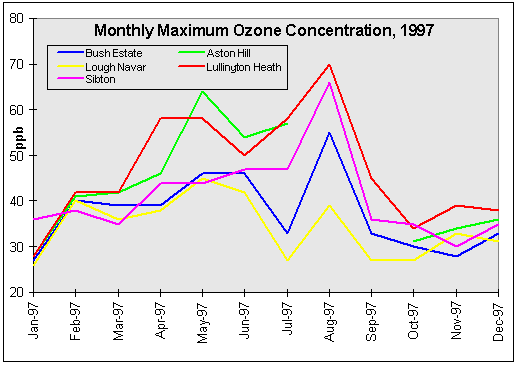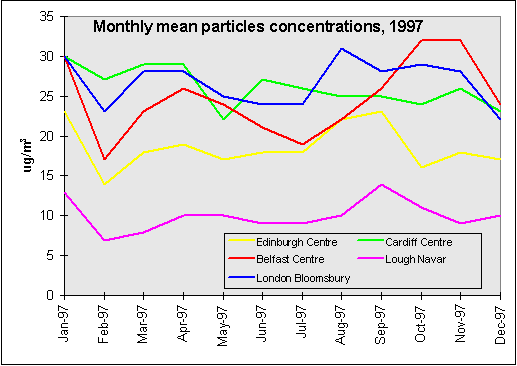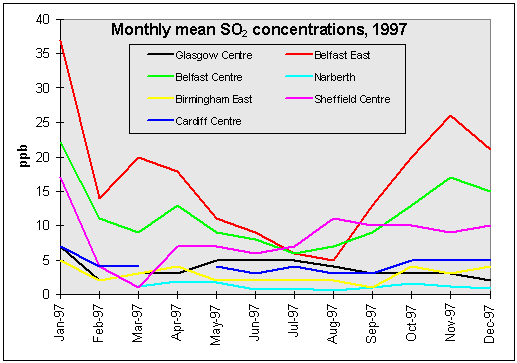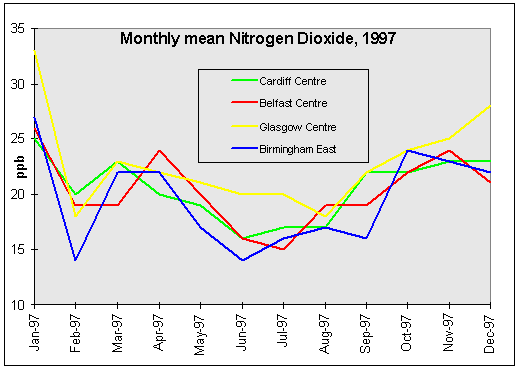
Seasonal patterns of pollution concentrations for 1997 are shown in Fig. 13. This shows monthly concentrations for four pollutants at sites across the UK.
The same factors discussed in previous sections cause the seasonal trends that are seen here. The action of strong sunlight on precursor pollutants produces ozone, so its concentrations are highest in the summer months. The other pollutants tend to have the highest concentrations in winter, because the weather conditions that trap them close to their sources occur during this period. Particles, however, show little consistent seasonal variation, because they are produced in sunlight as well as being involved in winter episodes, so these two influences tend to cancel each other out over the year.
In the past, seasonal changes in pollutant emissions - increased domestic coal burning in winter, for instance - strongly influenced seasonal changes in air pollution. Some seasonal influence on sulphur dioxide concentrations in Northern Ireland, where solid fuel is still used for domestic heating, is still evident, but weather conditions now cause most of the seasonal fluctuations in the levels of the other species.
Although these broad features can be seen during most years, the detail in these seasonal trends can differ from site to site, and occasionally from year to year.
Site prepared by the National Environmental Technology Centre, part of AEA Technology, on behalf of the UK Department of the Environment, Transport and the Regions







